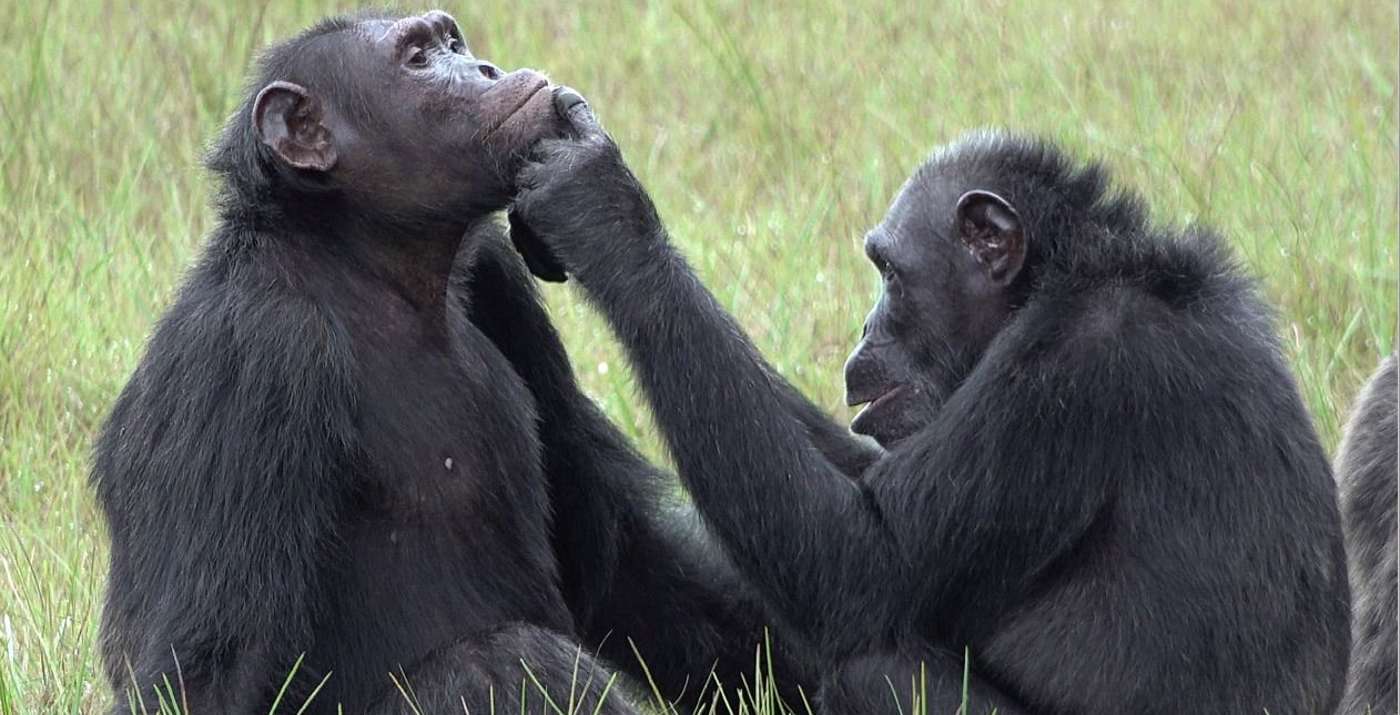Ginger Cat is Local Star for Stealing Hundreds of Toys and Presenting Them Sweetly to Neighbors
A klepto-cat has been stealing toys from yards and leaving them around this Brisbane neighborhood, winning the hearts as "Pirate Kitty."

The incredible world-first moment a chimpanzee mom applies an insect to her son's wound has been caught on video.
Researchers watched chimps in the wild in Gabon applying insects to their wounds and the wounds of loved ones.
Suzee the chimp was captured on camera inspecting a wound on her adolescent son Sia's foot before catching an insect out of the air, putting it in her mouth, pressing it between her lips, and applying it to the wound as her daughter Sassandra watches on.
Scientists say it shows the primates can show love and empathy for each other just like humans.
The footage was captured in November 2019 by volunteer biologist Alessandra Mascaro in Loango National Park in the West African country.
Researchers from the Ozouga Chimpanzee Project had been studying the group of chimps for seven years but had never seen anything like this before.
After they made the discovery, they started looking for more evidence of this wound-tending behaviour, and over the next 15 months they unearthed 76 examples of the same group applying insects to their own and each other's wounds.
Later they recorded their findings in a study published today in the journal Current Biology.
It is not the first time animals have been seen treating themselves for ailments- researchers have reported examples of bears, elephants and bees doing similar things before.
However, applying insects to wounds has never been seen in animals before and the researchers say it is remarkable the chimps apply the tiny creatures to others as well as themselves.
The academics say it is a very clear example of empathetic 'prosocial behaviour' which is also seen in humans.
It is not yet clear why insects are used to treat illness and which creatures are being used.
The scientists say the unique behaviour may be a way of relieving pain.
Ms Mascaro said, "In the video, you can see that Suzee is first looking at the foot of her son, and then it's as if she is thinking, 'What could I do?' and then she looks up, sees the insect, and catches it for her son."
Researchers watched chimps in the wild in Gabon applying insects to their wounds and the wounds of loved ones.
Suzee the chimp was captured on camera inspecting a wound on her adolescent son Sia's foot before catching an insect out of the air, putting it in her mouth, pressing it between her lips, and applying it to the wound as her daughter Sassandra watches on.
Scientists say it shows the primates can show love and empathy for each other just like humans.
The footage was captured in November 2019 by volunteer biologist Alessandra Mascaro in Loango National Park in the West African country.
Researchers from the Ozouga Chimpanzee Project had been studying the group of chimps for seven years but had never seen anything like this before.
After they made the discovery, they started looking for more evidence of this wound-tending behaviour, and over the next 15 months they unearthed 76 examples of the same group applying insects to their own and each other's wounds.
Later they recorded their findings in a study published today in the journal Current Biology.
It is not the first time animals have been seen treating themselves for ailments- researchers have reported examples of bears, elephants and bees doing similar things before.
However, applying insects to wounds has never been seen in animals before and the researchers say it is remarkable the chimps apply the tiny creatures to others as well as themselves.
The academics say it is a very clear example of empathetic 'prosocial behaviour' which is also seen in humans.
It is not yet clear why insects are used to treat illness and which creatures are being used.
The scientists say the unique behaviour may be a way of relieving pain.
Ms Mascaro said, "In the video, you can see that Suzee is first looking at the foot of her son, and then it's as if she is thinking, 'What could I do?' and then she looks up, sees the insect, and catches it for her son."
Study author Dr Simone Pika said, "This is, for me, especially breathtaking because so many people doubt prosocial abilities in other animals.
"Suddenly we have a species where we really see individuals caring for others.
"Humans use many species of insect as remedies against sickness-there have been studies showing that insects can have antibiotic, antiviral, and anthelmintic functions."
Study author Dr Tobias Dreschner said, "Studying great apes in their natural environments is crucial to shed light on our own cognitive evolution.
"We need to still put much more effort into studying and protecting them and also protecting their natural habitats."
The study is published in Current Biology.
(WATCH the video for this story below.)
GO APE For The News And Share The Story on Social Media…
Be the first to comment